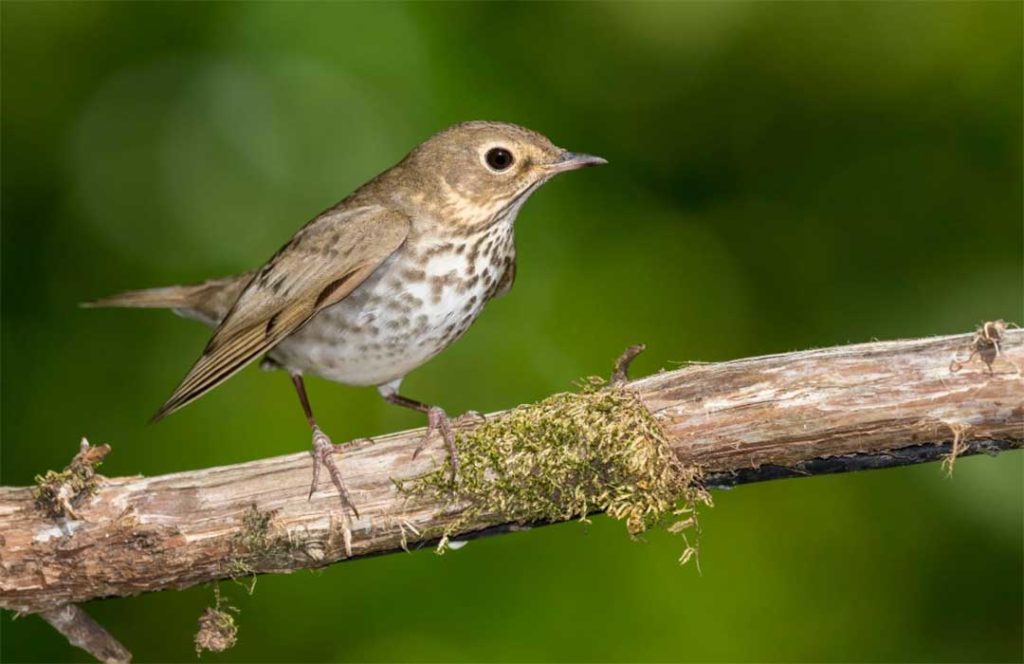VITAL SIGNS
- Common name: Swainson’s Thrush
- Latin name: Catharus ustulatus
- Range: Breeding grounds span the Southern half of Canada and migrate throughout the United States.
- Lifespan: 2-10 years
- Size: Length ranges from 16-19 cm, and wingspan ranges from 29-31 cm.
- Population estimate: Estimated population of over 50,000,000 breeding individuals in Canada1.
THE FACTS
The Swainson’s Thrush has a medium brown colour, but with a soft, pale, and spotted underbelly. They have white markings that extend in between their eyes, similar to the look of spectacles. Breeding often occurs in coniferous forests, but during migration periods, individuals can live in a variety of habitats. Diet during breeding seasons consists mainly of insects and arthropods such as ants, beetles, caterpillars, flies and grasshoppers3. In the Fall and Winter, they tend to eat fruits, particularly elderberries, blackberries, raspberries, twinberries, huckleberries, and others. When hunting prey, birds perch on low-lying branches and dive into the leaf litter below3. The species consists of two subspecies, russet-backed and olive-backed. Russet-backed thrushes have plumage with a reddish tint compared to the olive-backed, which are more brown2.
THE STORY
Though having a relatively stable population, the Swainson’s Thrush is negatively affected by habitat loss through human interactions such as logging and clearing for development. It has also been shown to be more susceptible to building and window collisions during migration1. According to the North American Breeding Bird Survey, the population has decreased by about 38% between 1966 and 20142. Significant threats occur in the destruction of their breeding habitats in the form of invasive plant species and human activity. Like many others, the Swainson’s Thrush is predicted to be harshly impacted by climate change, losing up to 48% of its habitual range if global temperatures increase by 2 degrees celsius4.
WHAT IS BEING DONE
The Swainson’s Thrush is not recognized by COSEWIC but was classified as being a species of “least concern” under IUCN Global1. It is also a priority species according to the Bird Conservation Region Strategies, in the Northern Rockies region1. The species was designated “secure” according to the Wild Species Canada 2010 report1. Swainson’s thrush was given a rating of 10/20 on the Continental Concern Score2.
WHAT YOU CAN DO
If you live in their range, providing tree and shrub cover, avoiding chemical pesticides and accumulating leaf litter are all ways of making an enticing habitat for this species. Advocating for the preservation of wildlife habitats and against urbanization is another great way to help many species, not just the Swainson’s Thrush.
Get involved with a local Bird Team in your community to work towards becoming Bird Friendly City Certified.
Host and participate in an upcoming World Migratory Bird Day event near you!
.
